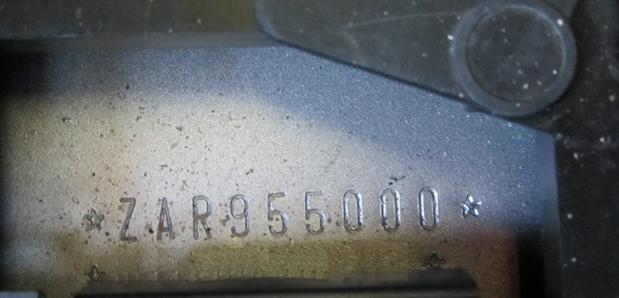
VIN numbers were first used in 1954 in the United States. The first numbers looked very different. It was only in the 1980s that the world’s manufacturers, together with the US manufacturers, finally agreed on this issue. A common standard was therefore developed to make things easier for the police, insurance companies and used car dealers. Since then, the VIN of every car has 17 characters – letters and numbers.
Despite its demise in 2001, models such as the Voyager and Fury are still sought after by Plymouth brand enthusiasts. The passing of time certainly nibbles at the bodywork and components with its teeth. Therefore, pay great attention to the visual inspection of the car. This will allow you to minimise any unpleasant surprises in the future. Visiting a diagnostic station and checking the VIN in Plymouth can also help. Not sure where the VIN in Plymouth is? Check it out in our database! When you do, write down your Vehicle Identification Number, then place it in the bar below. Once you’ve done that, we’ll check the vehicle history for you and provide you with a report of our search.
VIN Decoder Plymouth
Remember that before you buy, check the history of the vehicle. You do this by typing the VIN Number Plymouth below:
It’s worth deciphering the VIN before you buy the vehicle to make sure you’re actually paying for what you’re buying. Unfortunately, it may turn out that the new equipment adversely affects the vehicle and frequent visits to the showroom will be necessary. By checking the VIN, we are also able to determine whether the vehicle has accidentally entered the country illegally. This is unfortunately an increasingly frequent problem.
VIN number what is it?
The VIN, or Vehicle Indentification Number, is a unique vehicle identification number that contains numerous and important pieces of information about a car. The VIN includes information such as country of manufacture, model year, drive type, engine version, equipment options, among others.
VIN numbers were first used in 1954 in the United States. Car manufacturers such as Audi were already marking their cars in this way. Marking of this type began to be used by manufacturers in Europe. However, the first numbers looked very different. It was not until the 1980s (in 1981 to be precise) that the world’s manufacturers, together with the US manufacturers, finally agreed on this issue.
In 1981, the National Highway Traffic Safety Administration in the United States standardised the format. Cars sold should contain a 17-character VIN that does not contain the letters I (I), O (o) or P (q) (to avoid confusion with the numbers 1 and 0).
A common standard has therefore been developed to facilitate the work of the police, insurance companies and used car dealers. From now on, the VIN of each car has 17 characters – letters and numbers.


 EN
EN  PL
PL  RU
RU  DE
DE  HU
HU  EE
EE  LV
LV  RO
RO  SI
SI  CZ
CZ  LT
LT 